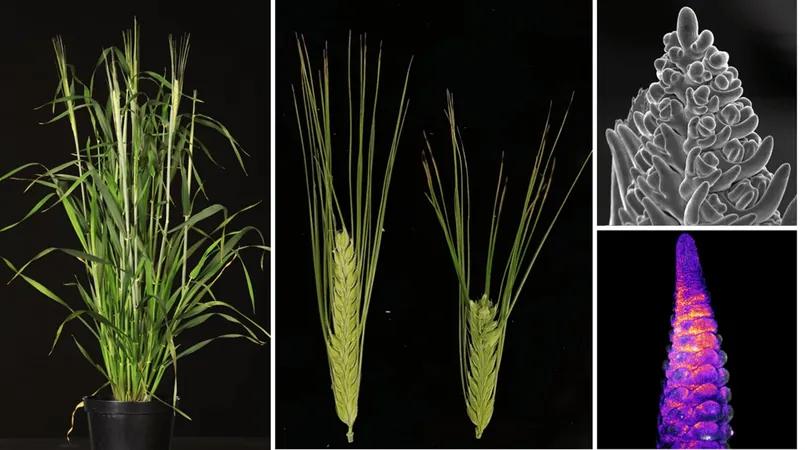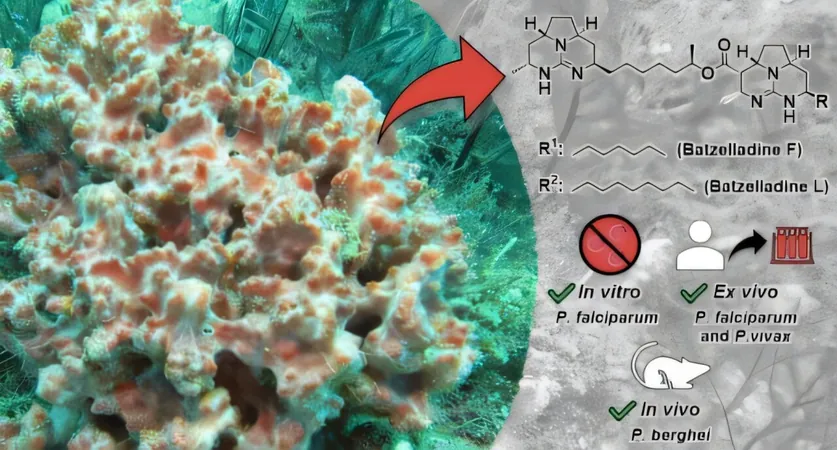
Unlocking the Secrets of Barley: How a Tiny Peptide Could Revolutionize Grain Production
2025-05-20
Author: John Tan
Harnessing Nature's Design: The Intriguing World of Barley Inflorescence
When we think of grains, barley often flies under the radar, overshadowed by its more glamorous counterparts like wheat. However, this humble plant boasts a fascinating and intricate architecture that dictates how its seeds are produced. Unlike grasses with sprawling, complex inflorescences, barley presents a simpler structure where each grain develops on a short stem known as a 'rachilla.'
The Power of Peptides: Unraveling the Growth Mechanism
A groundbreaking study led by Professor Dr. Rüdiger Simon from the Institute of Developmental Genetics at Heinrich Heine University has pinpointed a critical signaling pathway that orchestrates the growth of barley's meristems, the tissue responsible for plant growth. Published in *Nature Communications*, the research reveals that a peptide called HvFCP1, secreted by rachilla cells, interacts with a receptor known as HvCLV1 on the cell membrane. This interaction plays a pivotal role in determining the plant's inflorescence design.
Mutations Unleash Potential: A Closer Look at Barley Variants
The research team went further, exploring the effects of mutations in the genes responsible for the formation of HvFCP1 and HvCLV1. The results were astonishing: these mutated barley plants developed significantly larger inflorescences and rachillae, resembling the lush flower clusters found in wheat, capable of producing multiple grains from a single rachilla.
Advanced Imaging Techniques Drive Discovery
Employing cutting-edge techniques such as scanning electron microscopy and fluorescence microscopy, the research provided an in-depth cellular analysis coupled with a phenotypical characterization of the plants. Professor Simon praised the role of the Center for Advanced Imaging (CAi) at HHU, emphasizing how it enriched their research capabilities.
A New Era for Agriculture: Implications for Crop Yields
Lead author Dr. Isaia Vardanega expressed excitement about the potential applications of their findings, stating, 'Our discovery enables us to redesign grass inflorescences. A deeper understanding of barley's stem cell system can lead to increased grain production and bolster agricultural yields globally.'
Paving the Way for Innovative Breeding Approaches
Professor Simon concluded that this research lays the groundwork for new breeding strategies. With insights into the genetic regulation of barley's architecture, scientists are poised to develop high-yield varieties faster through genome editing, promising a brighter future for food production in the face of global challenges.



 Brasil (PT)
Brasil (PT)
 Canada (EN)
Canada (EN)
 Chile (ES)
Chile (ES)
 Česko (CS)
Česko (CS)
 대한민국 (KO)
대한민국 (KO)
 España (ES)
España (ES)
 France (FR)
France (FR)
 Hong Kong (EN)
Hong Kong (EN)
 Italia (IT)
Italia (IT)
 日本 (JA)
日本 (JA)
 Magyarország (HU)
Magyarország (HU)
 Norge (NO)
Norge (NO)
 Polska (PL)
Polska (PL)
 Schweiz (DE)
Schweiz (DE)
 Singapore (EN)
Singapore (EN)
 Sverige (SV)
Sverige (SV)
 Suomi (FI)
Suomi (FI)
 Türkiye (TR)
Türkiye (TR)
 الإمارات العربية المتحدة (AR)
الإمارات العربية المتحدة (AR)